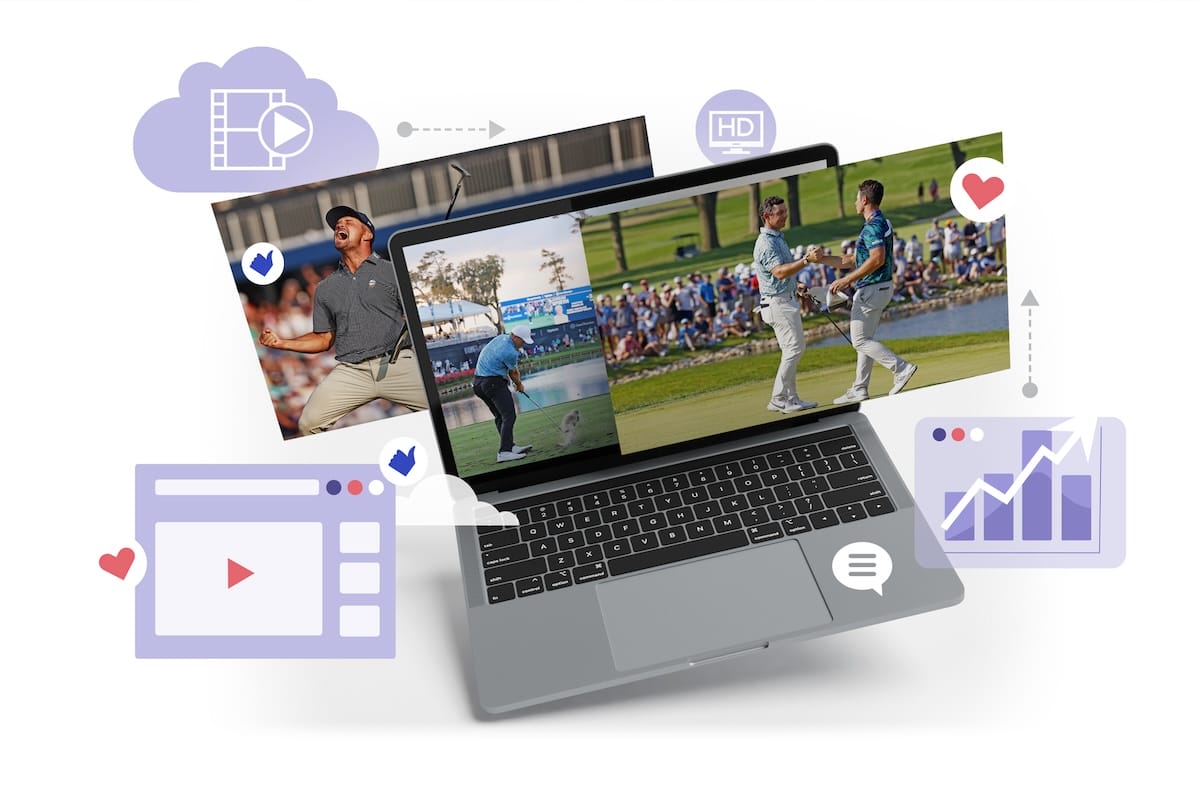Younger readers may not be aware of this, but once upon a time, watching a TV series meant waiting a full week for the latest episode to be aired or you had to buy a boxset of DVDs or VHS cassettes – ask your parents to explain what those were – in order to binge watch.
On demand TV was a pie in the sky idea. Then Netflix came along and all that changed. Suddenly, what used to take an entire Xtra-vision store to hold – again, ask your parents – was available at the click of a mouse or dab of a touch screen.
It sounds horrific, I know, but that was the world we lived in. Sadly, it’s still the world that the majority of professional golf broadcasting lives in. In the era where audiences are used to getting what they want, when they want and how they want, the PGA Tour continues to dictate what you see and when you see it.
And that’s all well and good if the numbers back up the strategy, but the numbers very clearly don’t. The first event of the PGA Tour’s FedEx Cup Playoff Series suffered a 30% decrease on 2023 figures, the Open Championship had its worst U.S. audience in a decade, and even the Masters dipped 10 percent from last year to this.
Of course, those streaming the content via alternate methods aren’t counted, and they are a considerable cohort, but even still, the trend is worrying. Yes, the fractured nature of top-tier men’s golf has had an effect, and LIV continues to attract paltry viewing figures so even the PGA Tour and LIV’s numbers combined don’t compute with the money being shelled out by the broadcasting companies who pay the PGA Tour for the rights.
Those of us who’ve grown up watching five-hour-plus daily broadcasts probably aren’t abandoning ship in our hordes, but each year our army dwindles and the troops aren’t replenished at the requisite rate.
And who can blame them? Short attention spans and lengthy broadcasts aren’t good bedfellows. Now, I’m not advocating for shorter tournaments here. 72 holes of strokeplay is the best way of identifying the best golfer on any given week, and I think that’s what the elite echelons of the sport should be. I’m also a traditionalist, but quite clearly, for the model to continue and networks to continue splashing out big money for broadcasting rights, something has to change.
Alternatively, the tours will have to come up with different platforms on which to broadcast and this is where I see the future of professional golf viewing. And different platforms offer different options.
If you’re a Seamus Power fan for example, unless he’s at the top of the leaderboard, holes a 60-footer, or dunks one from down the fairway, chances are you’ll not see a single shot he hits in the average PGA Tour event.
The same goes for 75 percent of the players in a field on any given week.
That’s understandable when you’ve got up to 156 players competing, you have limited airtime – yes, six+ hours is still limited when we’re talking about roughly 10,000 total shots in a day – and certain big names that take priority. You cater to the biggest cohort, and more people are interested in seeing Rory McIlroy than seeing Power. That’s no slight on Seamus, but it’s simple fact.
But for every McIlroy, Scheffler or Schauffele, there are dozens of other players that various people, and for various reasons, are more interested in seeing, and much of that is gambling related.
I make no secret of the fact that I love a flutter, but outside of the majors, unless I’ve got a player that I really fancy and think is overpriced, I tend to steer clear of golf betting, and the simple reason is that I bet to increase my enjoyment of the sport I’m watching, and if I’m not watching, I’ve no interest in betting.
The gambling industry is continuing to grow, and recent estimates suggest that over $3 billion is gambled annually on the PGA Tour in Las Vegas casinos alone. It’s harder to get global figures, but after only one round one of the BMW Championship over €1.5 million was wagered on the outright win market on Betfair.
That’s just one market in one company, so when you extend that across the multitude of bookmakers globally who all take action on the PGA Tour, that $3 billion in Sin City is but a drop in the ocean.
And you’d better believe that if I’ve backed Si Woo Kim, Chesson Hadley and Nick Taylor to make the cut in a random PGA Tour event, then I’m definitely interested in tuning in to see them play.
The future of golf broadcasting, particularly for an organisation like the PGA Tour, has to be on an independent – or possibly self-owned – platform that allows people to pick and choose the players they want to watch, alongside a main feed that primarily focuses on the big names, tournament leaders and a medley of the other shots worth showing.
There are already cameras stationed on every green that capture approach shots, short game shots and putts, it would simply be a case of adding the requisite cameras to tee boxes.
You like Rory McIlroy? Here’s his entire round in a six-or-seven-minute clip. You’re Argentinian? Here’s Emiliano Grillo and Alejandro Tosti as though they were playing in the same group. The possibilities aren’t quite endless, but they’re lengthy.
And it’s not as if this is some outlandish, futuristic idea that’s only possible in science fiction. Augusta National do it every year at the Masters, and LIV debuted the ‘Any Shot, Any Time’ feature on the LIV Golf+ app back in July.
Neither are perfect, nor would you expect them to be with one being infrequently rolled out and the other still in its infancy, but at least they are forward thinking, and they recognise that the world and the way in which media is consumed is rapidly changing.























Leave a comment